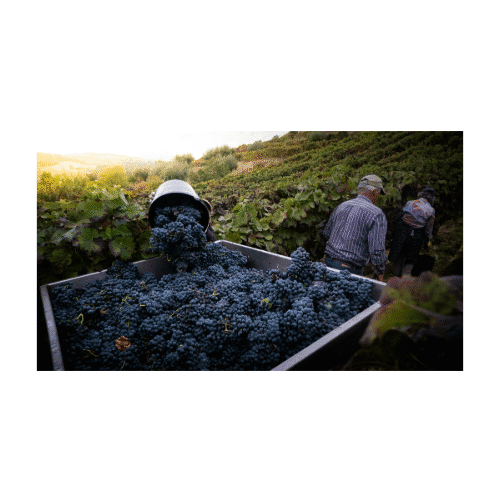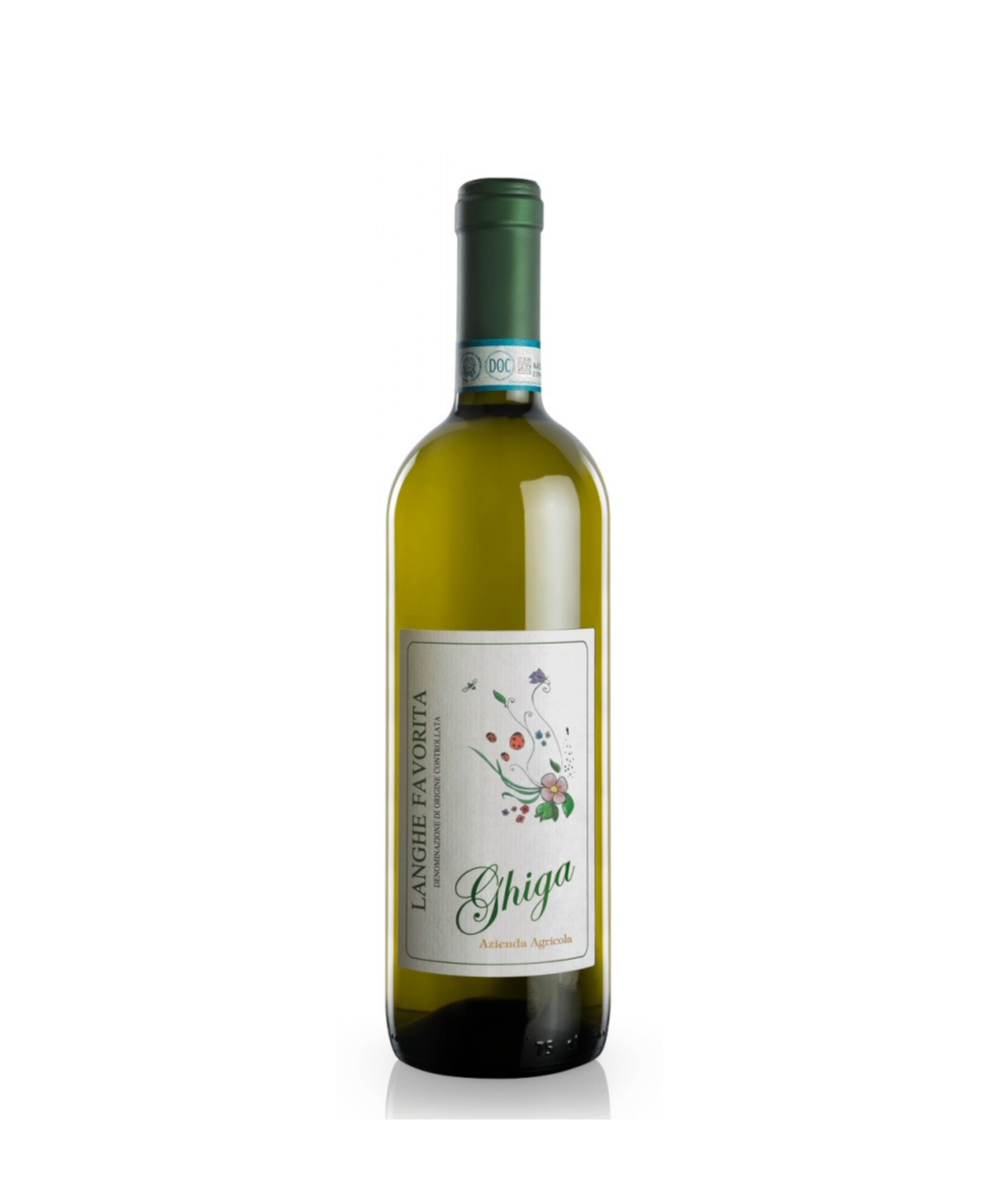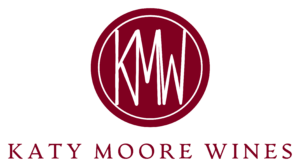Picture this: after months of careful vineyard management, watching vines grow from budbreak through veraison, everything comes down to one crucial moment, harvest. It’s the winemaker’s equivalent of a championship game, where split-second decisions can make or break an entire vintage. The choices made during this pivotal time don’t just affect whether grapes make it into the cellar; they fundamentally shape the character, quality, and personality of every bottle that emerges months later.
Whether you’re a wine enthusiast curious about what happens behind the scenes or someone looking to deepen your appreciation for that glass in your hand, understanding harvest is like having a backstage pass to winemaking’s most dramatic act.
The Art and Science of Perfect Timing
Harvest timing is where winemaking transforms from agriculture into artistry. It’s a delicate dance between science and intuition, where sugar levels, acidity, and tannin development must align in perfect harmony. Think of it like baking the perfect loaf of bread, too early and you miss the full flavor potential, too late and everything falls apart.
Winemakers spend weeks during harvest season tasting grapes daily, armed with refractometers to measure sugar content (measured in Brix), pH meters, and years of experience reading the subtle signs that grapes are ready. Most wine grapes hit their sweet spot around 22-24° Brix, but this varies dramatically depending on what style of wine the winemaker envisions.
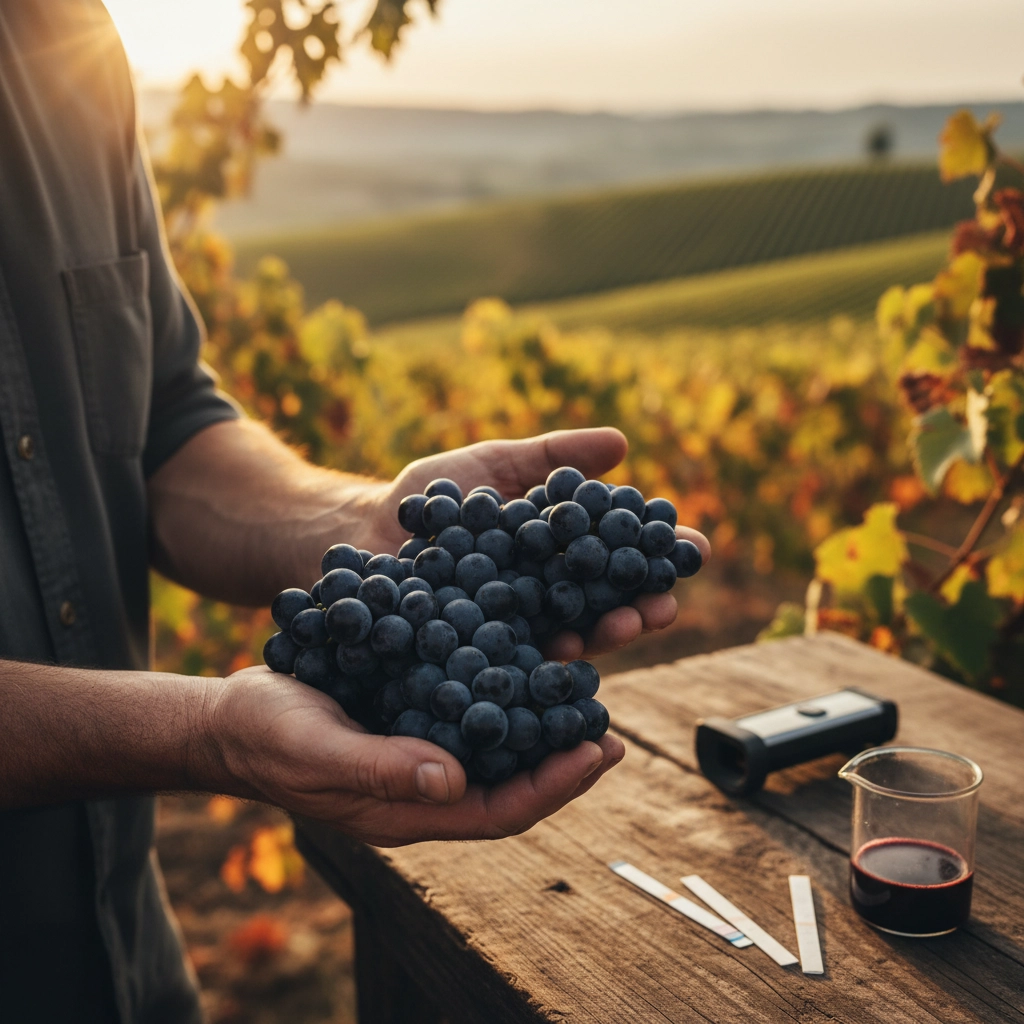
The fascinating part? Grapes undergo a complete personality change during ripening. They start the season as little green marbles, high in jaw-puckering acidity and virtually no sugar, hard as rocks. As summer progresses, sugar levels climb while acidity drops, and those crucial phenolic compounds, tannins and color pigments, mature into something that can create wine magic.
But here’s where it gets tricky: there’s no universal “perfect” harvest date. A Sauvignon Blanc destined for a crisp, refreshing style needs different timing than a Cabernet Sauvignon meant for long-term aging. Weather adds another layer of complexity, unexpected rain can dilute flavors, while heat spikes can cause sugar to skyrocket overnight.
How Timing Creates Different Wine Personalities
Ever wonder why some wines taste bright and zippy while others are rich and full-bodied? The answer often lies in harvest timing, and the differences can be dramatic.
Early harvest grapes create wines with higher acidity and lower alcohol, think of those refreshing, food-friendly wines that make your mouth water. These grapes produce wines with vibrant fruit flavors, crisp textures, and that “bright” quality wine lovers describe. It’s no coincidence that sparkling wine producers specifically target early harvest when acidity levels are still sky-high.
Late harvest tells a completely different story. Extended hang time allows grapes to develop deeper, more concentrated flavors and higher sugar levels, translating to fuller-bodied wines with more alcohol and richer fruit character. But it’s a high-stakes game, wait too long and you risk overripe, jammy flavors or worse, disease pressure that can ruin an entire crop.
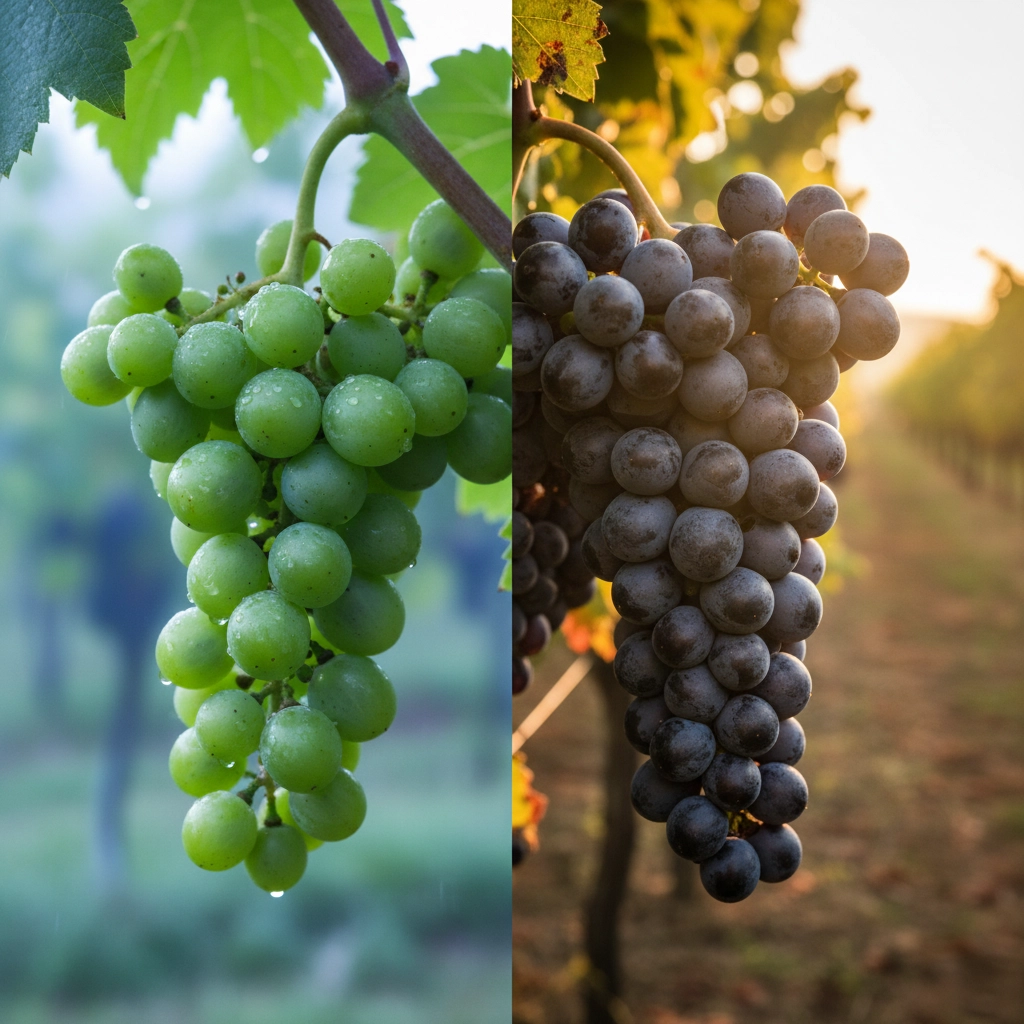
This timing flexibility gives winemakers incredible creative control. Want to craft a lighter, lower-alcohol wine to match current market trends? Harvest early. Aiming for a bold, age-worthy red that’ll improve for decades? Let those grapes hang longer and develop complexity.
Hand-Picked vs. Machine Harvested: The Quality Debate
Walk through wine country during harvest and you’ll witness two very different approaches to getting grapes from vine to cellar. The choice between hand harvesting and mechanical harvesting isn’t just about tradition versus technology, it fundamentally impacts wine quality.
Hand harvesting is exactly what it sounds like: skilled workers with small shears carefully selecting and cutting grape clusters. It’s labor-intensive, time-consuming, and expensive, but the quality advantages are undeniable. Human harvesters can instantly spot and reject damaged, unripe, or diseased fruit. They handle clusters gently, minimizing damage to berries that could lead to premature oxidation or unwanted flavors.
For premium wines, especially those destined for bottle aging, hand harvesting often isn’t negotiable. The precision and care simply can’t be matched by machines. It may also be a regional requirement.
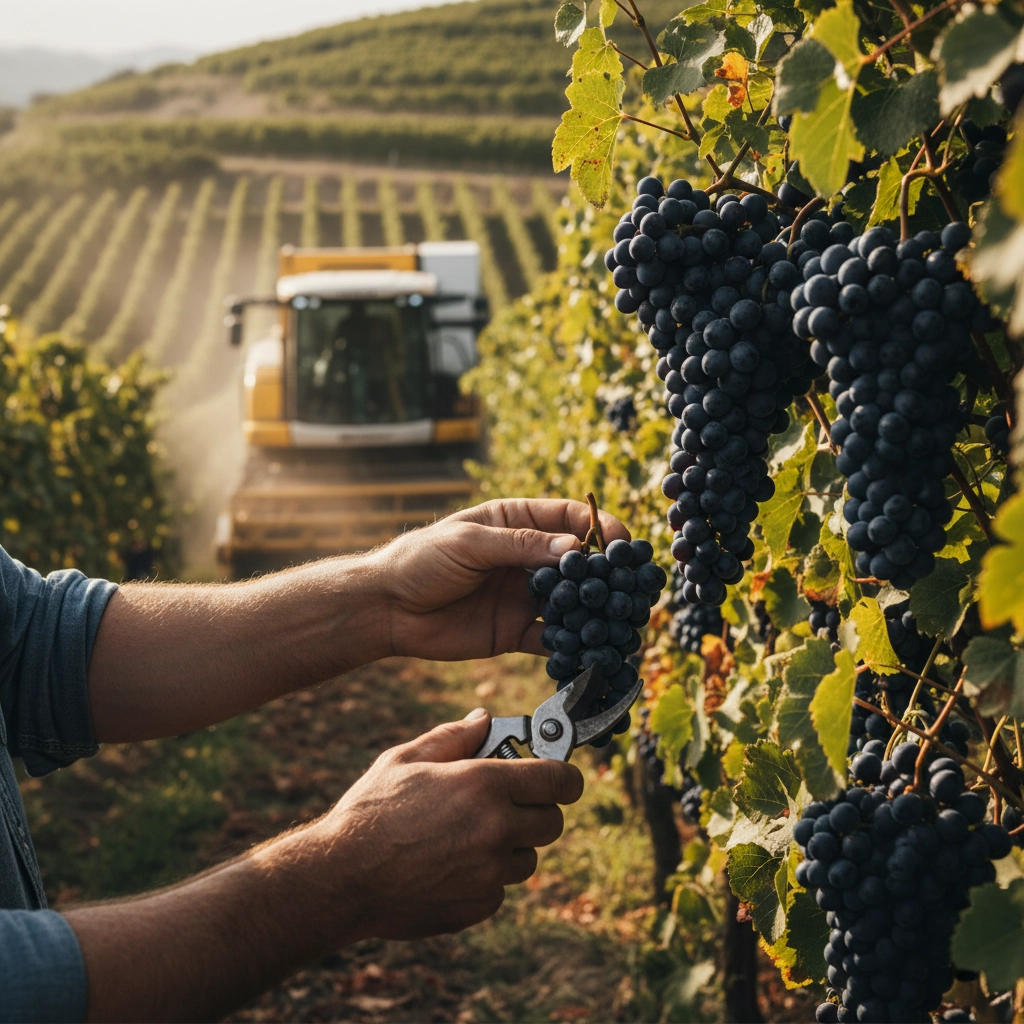
Mechanical harvesting has come a long way from the grape-bruising machines of decades past. Modern harvesters use sophisticated shaking mechanisms to dislodge grapes while leaving vines largely intact. The efficiency is remarkable, a good harvesting crew might pick a few tons per day, while a machine can handle 50+ tons.
The trade-offs? Machines can’t discriminate between perfect and imperfect fruit, and they inevitably pick up some leaves, stems, and debris along with grapes. Interestingly, recent research suggests mechanical harvesting might actually benefit certain varieties like Sauvignon Blanc by releasing more aromatic compounds during the process.
The Sorting Game: Separating Great from Good
Once grapes reach the winery, the quality obsession continues with sorting, essentially, grape quality control on steroids. This step separates good wineries from great ones, and the methods range from old-school manual inspection to space-age optical technology.
Manual sorting involves teams of workers hunched over vibrating tables, inspecting every cluster and removing anything that doesn’t meet standards. Unripe berries, leaves, stems, damaged fruit, all get tossed. It’s tedious work, but the impact on final wine quality is enormous. Only the best fruit makes it to fermentation tanks.
The latest innovation? Optical sorting machines borrowed from the food industry. These high-tech marvels use cameras and sensors to evaluate grapes by color, size, and shape faster than any human could manage. They can spot and reject individual berries that don’t meet programmed specifications, achieving precision that would be impossible manually.
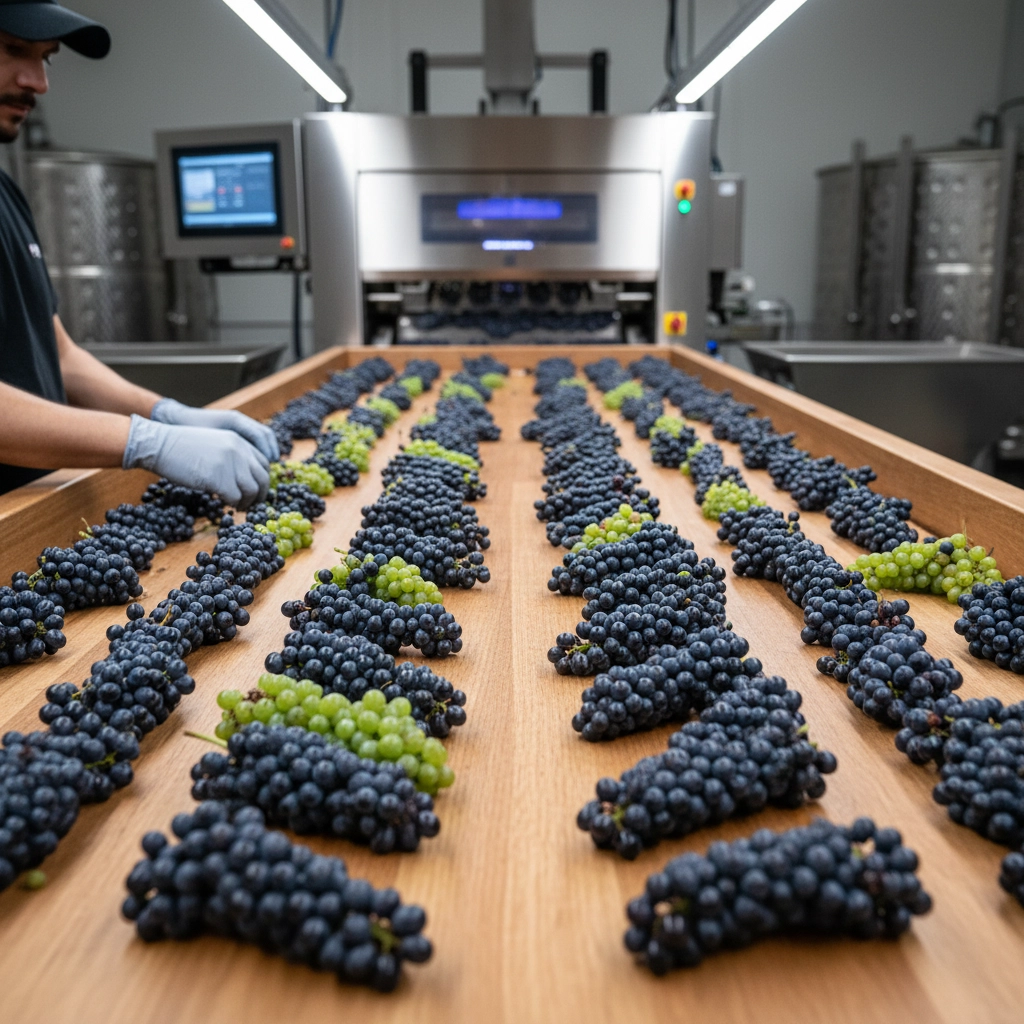
The investment in sorting equipment tells you everything about a winery’s quality commitment. Premium producers often use multiple sorting stages, first removing obviously damaged clusters, then berry-by-berry inspection to eliminate anything imperfect.
Weather: The Wild Card That Changes Everything
Nothing keeps winemakers awake at night quite like weather forecasts during harvest. After a year of careful vineyard management, Mother Nature still holds all the cards in those final crucial weeks.
Cool, wet weather during harvest can spell disaster, diluting flavors and encouraging rot. Hot spells can cause sugar levels to spike unpredictably, forcing premature harvest decisions. Hail can destroy an entire crop in minutes. Even wind patterns matter: constant breezes help dry morning dew that might otherwise encourage fungal diseases.
Smart winemakers build flexibility into harvest planning. They might start with their most vulnerable blocks or varieties that peak earliest, leaving hardier grapes for later when weather becomes more unpredictable. Some invest in weather stations and employ meteorologists to get the most accurate forecasts possible.
The reality? Even with perfect planning, harvest often becomes controlled chaos as weather windows open and close. It’s not uncommon for harvest crews to work around the clock when conditions are ideal, knowing that waiting might mean compromising quality.
From Vineyard to Glass: Why It All Matters
Understanding harvest helps explain why wines from the same vineyard can taste dramatically different from year to year, or why that special bottle you’re saving might be worth the wait. Every decision made during those intense harvest weeks: timing, method, sorting standards, weather responses: leaves fingerprints on the final wine.
The next time you’re savoring a glass of wine, take a moment to appreciate the intense period of decisions and careful work that brought those grapes from vine to bottle. That bright acidity in your Riesling? Probably from an early harvest decision. The rich, concentrated flavors in your Cabernet? Likely the result of extended hang time and meticulous sorting.
Wine isn’t just fermented grape juice: it’s the culmination of countless decisions made by passionate people who understand that quality begins in the vineyard and peaks during those crucial harvest weeks. Each bottle tells the story of that vintage’s unique journey from grape to glass.

